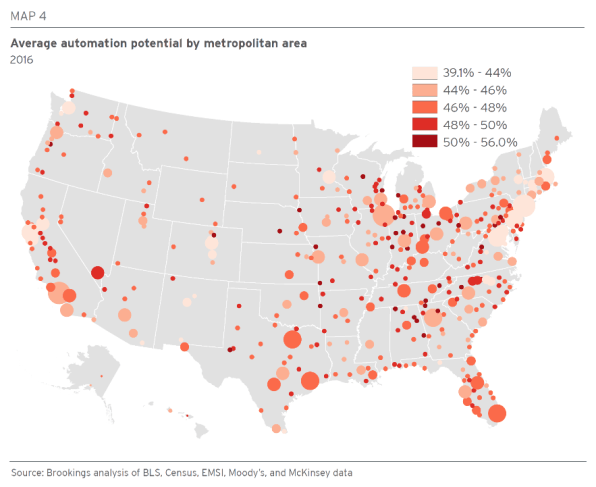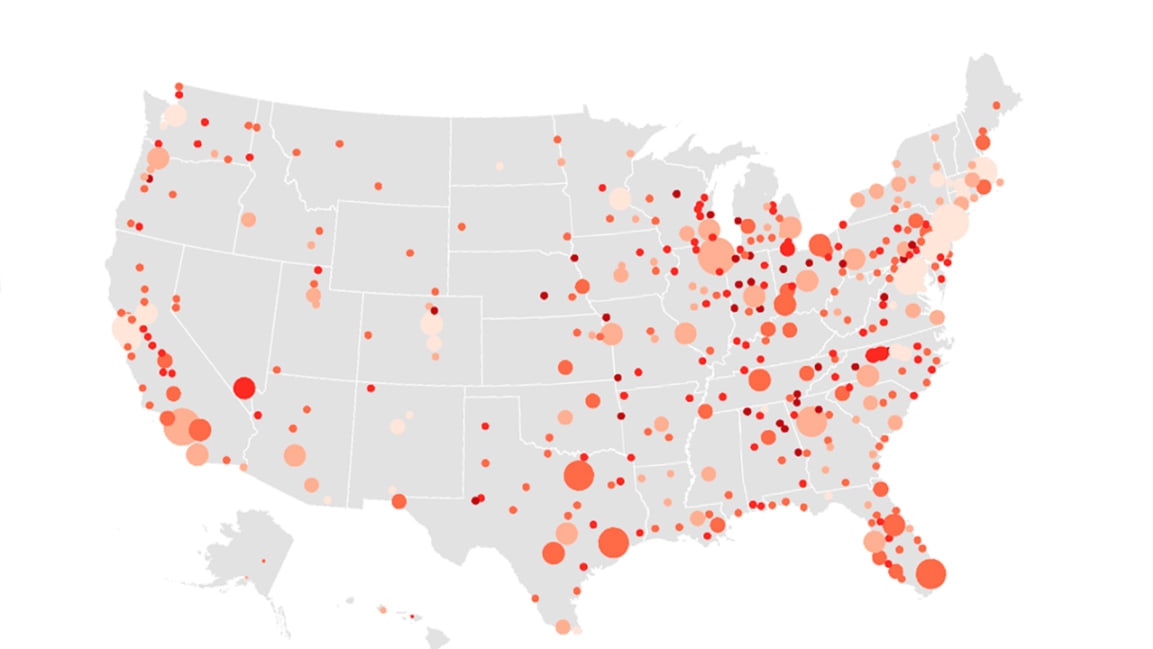Here are the metro areas likely to be the most and least impacted by automation
As it becomes clear that increasing automation will take longer to completely disrupt the economy and the job market, the experts are adjusting their expectations. The trend has moved in recent years from widespread fears that robots would destroy jobs to reassurances that the world would still have a place for your paltry human skills. Now, we’re “at a more complicated, mixed understanding that suggests that automation will bring neither apocalypse nor utopia,” concludes the Brookings Institution in a new report, “Automation and Artificial Intelligence.”
According to the report, about 25% of U.S. employment is expected to face a high exposure to automation (i.e., job losses and reduced hours) in the coming decades—and men, young workers, and underrepresented communities are likely to bear the brunt of the impact. For example, Hispanic and black workers face average “current-task automation potentials” of 47% and 44% for their jobs compared to 40% and 39% for their white and Asian counterparts.
The risk of automation also varies across regions and states, with the heartland states in the Midwest and Southeast facing the most disruption, and cities like Washington, D.C., and San Jose, Calif., having the lowest risk of automation impacting their current job markets due to their specializations in professional, business, and financial services occupations, according to the report.
Here’s a map of which metro areas will be most and least impacted by automation:

(28)



